Home Decor
How to Paint Mirrors Yourself
Prepare to unlock the secrets of a professional-looking painted mirror finish with these expert-approved steps and techniques.
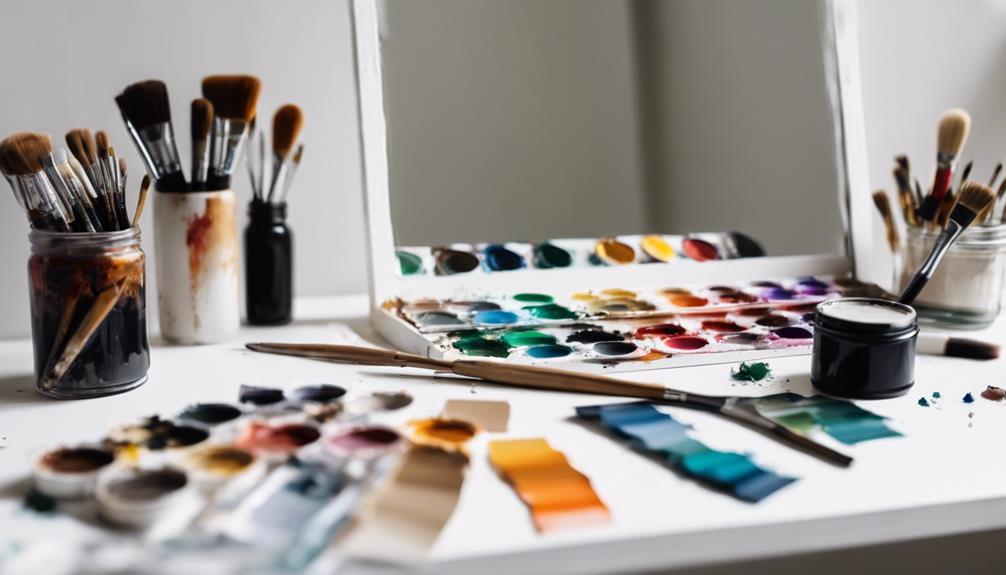
When you paint a mirror, the key to a professional-looking finish lies in meticulous surface preparation, which begins with thoroughly cleaning the mirror with a dampened microfiber cloth to guarantee a smooth surface for painting. Apply white gesso to enhance paint adhesion, letting it dry for at least 24 hours, then prime with a white acrylic base coat before applying chosen paint colors. Use enamel or acrylic paint formulated for glass surfaces, and paint in thin, even coats, allowing each to dry completely before adding the next. By following these steps, you'll be well on your way to creating a beautifully painted mirror that's both durable and visually stunning – and there's more to explore when it comes to achieving a flawless finish.
Key Takeaways
• Clean the mirror thoroughly with a dampened microfiber cloth to ensure a smooth surface for painting.
• Apply white gesso to the mirror to enhance paint adhesion and let it dry for at least 24 hours.
• Use high-quality enamel or acrylic paint specifically formulated for glass surfaces to ensure durability and vibrancy.
• Apply paint in thin, even coats, allowing each coat to dry completely before adding the next to achieve a smooth finish.
• Seal the painted mirror with a compatible sealant in thin, even coats to protect the finish and ensure long-lasting durability.
Preparing the Mirrored Surface
Before you begin painting, thoroughly clean the mirror with a dampened microfiber cloth to remove dirt and grime that might affect paint adhesion. This step is important, as any dirt or grime left on the mirror's surface can cause the paint to peel off or not stick properly.
Once the mirror is clean, you'll be ready to move on to the next step. Now, it's vital to create a smooth surface for painting. You'll need to apply a white gesso to the areas you plan to paint, which will help the paint adhere better. Make sure to let the gesso dry for at least 24 hours before proceeding with painting the mirror. This will establish a strong bond between the paint and the mirror's surface.
With a smooth, primed surface, you'll be ready to start painting. Remember to use a white acrylic base coat before applying your chosen paint colors to enhance their vibrancy and coverage. With these steps, you'll be well on your way to transforming your mirror into a beautiful work of art.
Tracing and Priming the Mirror
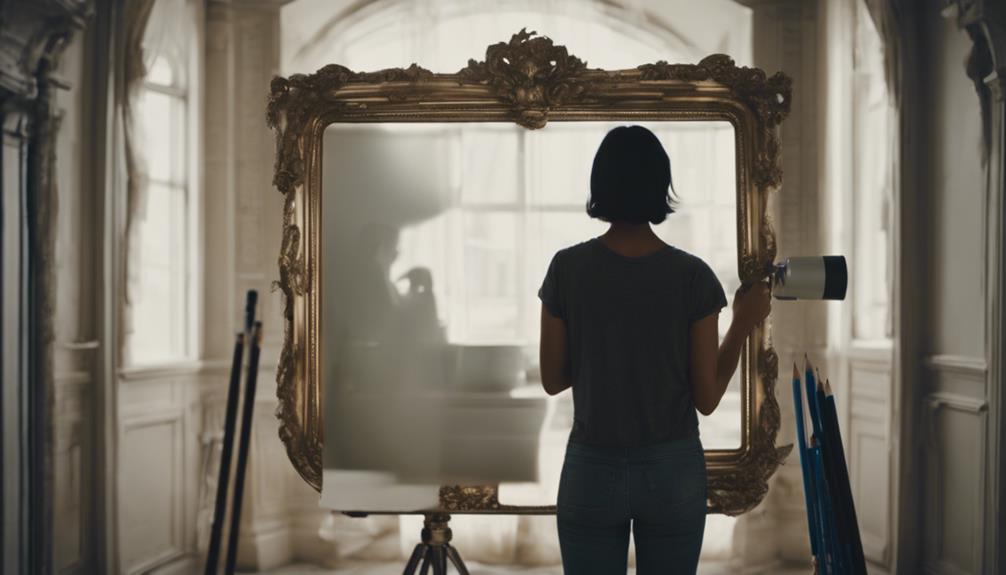
As you move forward with tracing and priming your mirror, you'll need to tackle three essential steps: removing old coatings, cleaning the surface, and applying a primer coat.
You'll want to start by stripping away any existing coatings or residue, making sure the surface is smooth and even.
Next, you'll clean the mirror thoroughly, wiping away any grime or fingerprints that might interfere with the painting process.
Removing Old Coatings
You'll need to remove any old coatings from the mirror's surface to guarantee a strong bond between the glass and your new design. This step is important, as it ensures that your paint adheres properly and lasts longer. If you're working with an old mirror, it's likely to have a layer of old varnish or other coatings that need to be removed.
| Step | Description |
|---|---|
| 1 | Remove old coatings |
| 2 | Clean the surface |
| 3 | Apply white gesso |
| 4 | Paint your design |
Once you've removed the old coatings, you can proceed to clean the surface of the mirror. This will give you a smooth, even surface to work with. After cleaning, apply a thin layer of white gesso to the mirrored surface. This will create a base for your paint and prevent peeling. Now you're ready to start painting your mirror! Remember to use enamel or acrylic paint specifically formulated for glass surfaces for better adhesion and durability.
Cleaning the Surface
Clean the mirror's surface thoroughly with a soft cloth and window cleaner to remove any fingerprints, grime, or residue left behind from the old coatings. This step is vital to guarantee a smooth painting process.
Any dirt or grime left on the surface can affect the adhesion of the paint, leading to peeling or flaking.
Before you start painting, make sure to:
- Clean the mirror's surface with a soft cloth and window cleaner
- Trace the area to be painted with a water-soluble pencil, white crayon, or fabric pencil for accuracy
- Prime the mirror using white gesso to ensure proper adhesion of the paint and prevent peeling
- Let the gesso dry overnight before proceeding with painting to achieve the best results
Applying Primer Coat
With the mirror's surface now clean and ready, take the next step by tracing the area you plan to paint with a water-soluble pencil, guaranteeing an accurate outline for your design. This will help you visualize your design and prevent any mistakes during the painting process.
Next, it's time to apply a primer coat to the mirror. For painting on mirrors, a primer coat is crucial to secure paint adhesion and prevent peeling. You'll need white gesso, a water-based primer that acts as a base layer, similar to thin white acrylic paint. You can easily find white gesso at art supply stores or online.
Apply a thin, even layer of gesso to the mirror, making sure to cover the entire area you plan to paint. Allow the gesso to dry overnight before proceeding with painting. This will establish a strong bond between the gesso and the paint, resulting in a beautiful, long-lasting finish.
Painting the Mirror With Enamel
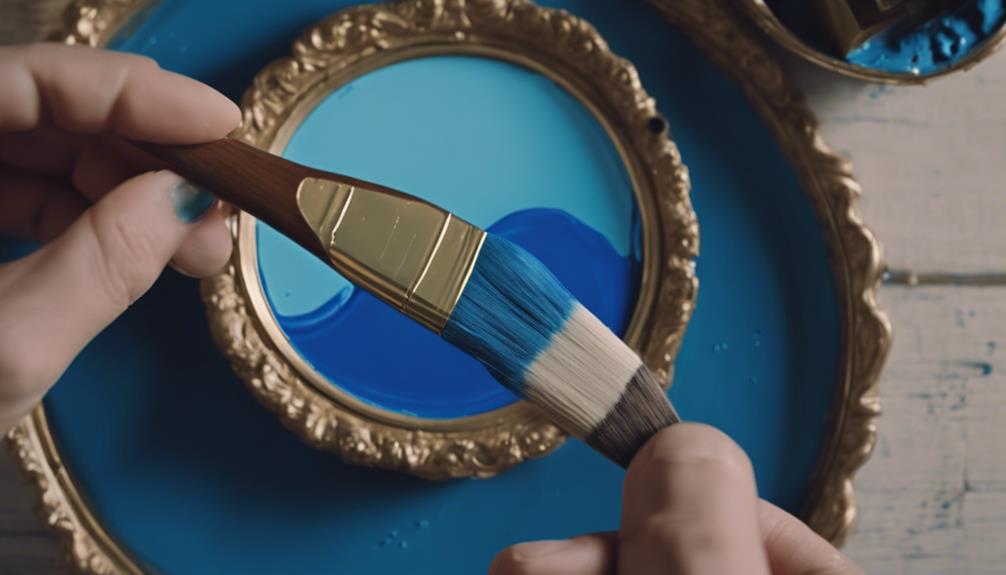
As you prepare to paint your mirror with enamel, it's crucial to keep in mind a few key considerations.
You'll want to focus on preparation tips, such as applying a layer of white acrylic paint on gesso, to guarantee a smooth and durable finish.
Additionally, you'll need to choose the right type of enamel paint, like Deco Art, and master the correct application techniques to achieve a beautiful, long-lasting result.
Preparation Tips
You'll need to prime your mirror's surface with white gesso before applying enamel paint to guarantee a strong bond and a durable finish. Proper surface preparation is essential for a long-lasting result.
Enamel paint is a great choice for painting mirrors, offering a softer and subtler finish compared to acrylic paint. However, it requires a well-prepared surface to adhere properly.
Here are some essential preparation tips to keep in mind:
- Use white gesso to prime your mirror's surface, ensuring a strong bond between the mirror and the enamel paint.
- Apply a layer of white acrylic paint as a base to enhance the vibrancy of the enamel paint.
- Make sure the surface is clean and free of dust, oil, or wax, which can affect paint adhesion.
- Avoid spray painting, as it can create uneven surfaces and affect the finish.
Enamel Types Matter
What type of enamel paint is best suited for your mirror's unique design and functionality?
When it comes to painting a mirror, enamel paint is an excellent choice. Not only does it provide a glossy finish, but it's also incredibly durable and resistant to chipping, making it perfect for high-traffic areas.
You'll have a wide range of colors and finishes to choose from, allowing you to customize your mirror's design to fit your personal style. One thing to keep in mind is that enamel paint typically requires longer drying times compared to acrylic paint, so be patient and plan accordingly.
With enamel paint, you can rest assured that your mirror will maintain its vibrant appearance for years to come. Its excellent adhesion and longevity make it a top recommendation for mirrors.
Application Techniques
Using a high-quality enamel paint specifically formulated for glass surfaces, such as Deco Art, paint the mirror in thin, even coats to achieve a smooth, long-lasting finish. This is essential, as enamel paint can be prone to dripping or pooling if applied too thickly.
To guarantee a professional-looking result, follow these application techniques:
- Apply enamel paint in thin, even layers, allowing each coat to dry completely before adding the next.
- Consider layering enamel paint over a base of white acrylic paint to enhance color vibrancy.
- Allow ample drying time between coats to prevent a rough, uneven finish.
- Work in a well-ventilated area, and use a foam brush or high-quality paintbrush to minimize streaks and bubbles.
Applying Acrylic Paint Layers
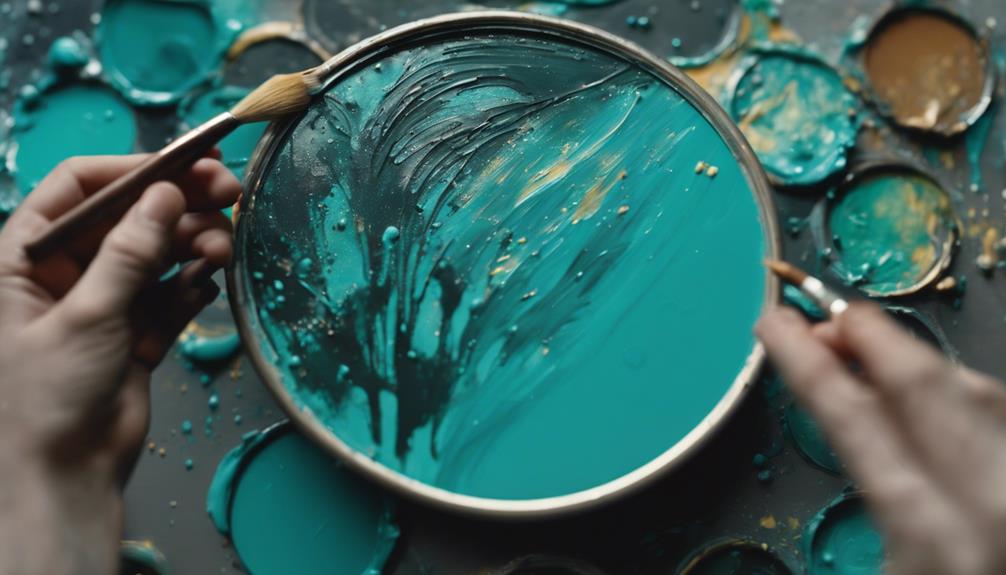
As you begin applying acrylic paint layers, start with the darkest shades first, gradually building up to lighter hues to achieve depth and dimension on your mirror's surface. This technique allows you to create a sense of dimensionality and visual interest on your mirrored surface.
When applying layers, use a variety of brush sizes to achieve different textures and details. For instance, you can use larger brushes for broad strokes and smaller ones for finer details.
Remember to allow each layer of acrylic paint to dry completely before adding another layer. This is essential for best results, as it prevents the paint from becoming muddy or uneven. By doing so, you'll achieve a durable and vibrant finish on your mirrored surface.
As you work through the layers, you'll start to see your design come to life. With acrylic paint, you can rest assured that your design will be long-lasting and resistant to fading.
Sealing the Painted Mirror
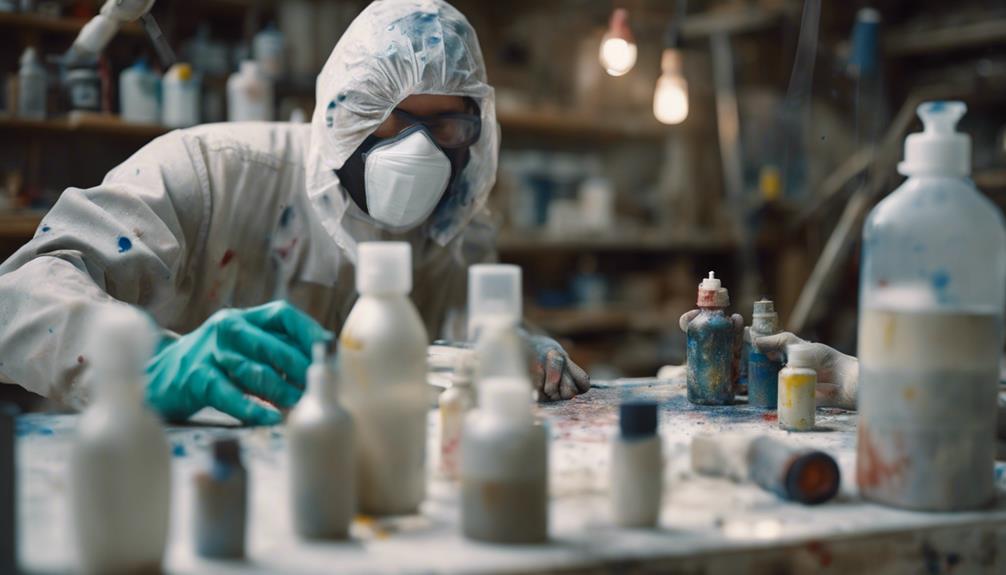
You'll want to seal your beautifully painted mirror with a clear varnish to protect it from scratches and wear. This step is important in preserving your hard work and guaranteeing your mirror remains stunning for years to come. When choosing a sealant, make sure it's compatible with the type of paint you used on your mirror frame.
Here are some essential tips to keep in mind when sealing your painted mirror:
- Apply the sealant in thin, even coats to avoid drips or uneven coverage.
- Ensure the sealant is fully dry according to the manufacturer's instructions before handling the mirror.
- Regularly inspect the sealed mirror for any signs of damage or wear, and reapply sealant as needed.
- Remember to follow the manufacturer's instructions for the recommended number of coats and drying time.
Removing Excess Paint Safely

To safeguard damage to your mirror's surface, remove excess paint promptly and carefully. When working with spray paint, it's especially important to act quickly, as it can dry fast and become difficult to remove.
Start by wiping off excess paint with a soft cloth or paper towel, being cautious not to scratch the glass. For more stubborn paint, use a razor scraper with glass cleaner to gently remove the excess. If you're working with oil-based paint, consider using a non-toxic solvent like Chelsea Classical Studio to help with removal.
For acrylic paint, a cotton swab can be a useful tool in fixing mistakes and removing excess paint. Remember to work carefully around the frame around the mirror, as you don't want to get paint on it.
Distressing the Painted Mirror
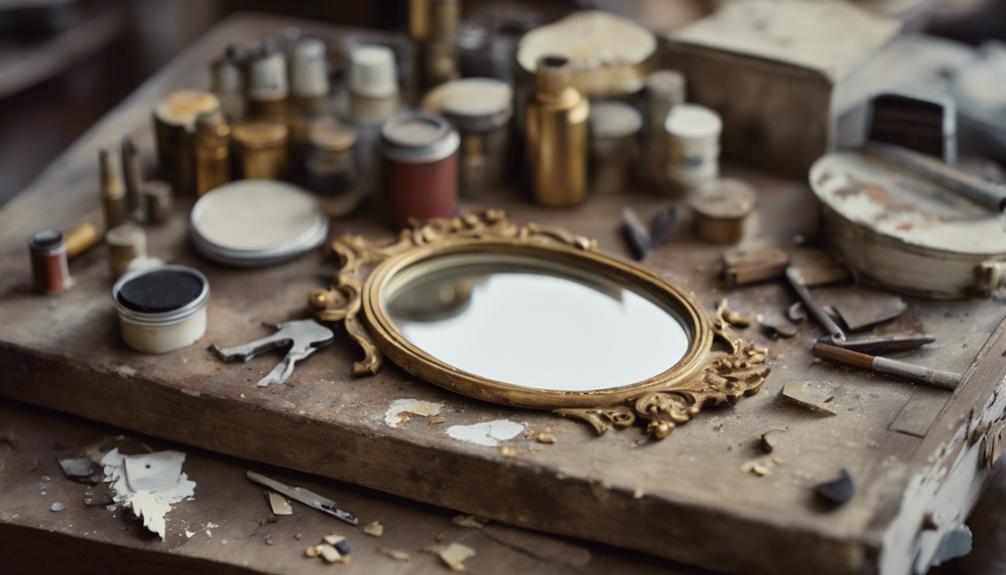
With your painted mirror now free of excess paint, take a sanding block or scraper in hand and start distressing the surface to achieve a beautifully weathered look. This process adds character and depth to the mirror, enhancing its overall appearance.
Using sandpaper, gently distress the edges and corners of the mirror frame for a vintage effect. Consider using a candle or Vaseline on strategic areas before painting to easily distress the paint later.
Here are some tips to keep in mind when distressing your mirror:
- Use painters tape to protect areas you don't want to distress
- Experiment with different distressing techniques to achieve the desired level of antiquity or shabby chic style
- Sandpaper is your friend – use it to smooth out rough edges and create a soft, worn look
- Don't be afraid to get creative and try new things – distressing is all about experimentation and having fun!
Tips for a Flawless Finish
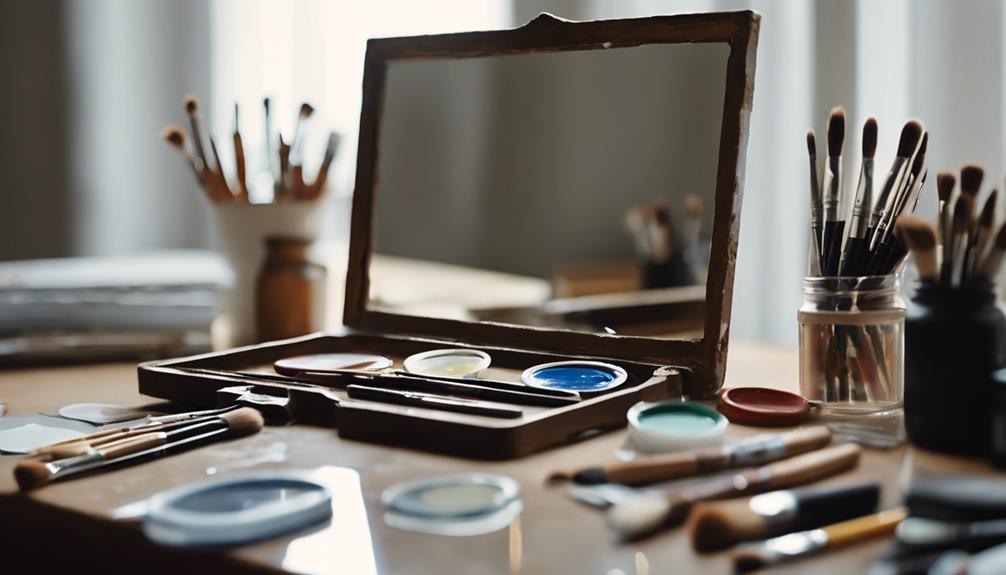
Now that you've achieved a beautifully distressed look, it's time to focus on perfecting the finish of your painted mirror. To guarantee a flawless finish, you'll need to prime, paint, and seal your mirror surface correctly.
| Step | Product | Purpose |
|---|---|---|
| 1 | White gesso | Primer to prevent paint peeling |
| 2 | Acrylic paint | Bold, vibrant color |
| 3 | Acrylic paint | Additional coats for desired color |
| 4 | Varnish | Seal and protect the finish |
When applying paint, remember to allow each layer to dry completely before adding another coat. This will prevent unevenness and ensure a smooth finish. Using acrylic paint will provide a bold, vibrant look, while enamel paint offers durability. Apply a layer of white acrylic paint over the gesso primer for better adhesion. Finally, seal the painted areas with varnish for long-lasting protection and a professional finish. By following these steps, you'll achieve a beautifully painted mirror that will last for years to come.
Common Mistakes to Avoid
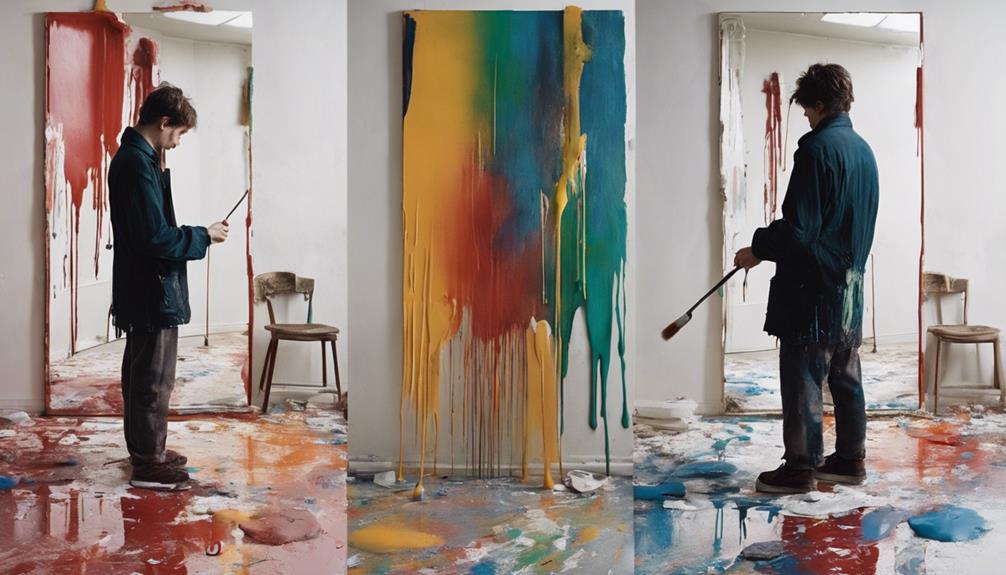
Your painted mirror's success depends on sidestepping common pitfalls that can ruin the finish, and being aware of these mistakes is the first step to a flawless outcome.
To avoid a disastrous DIY project, steer clear of these common mistakes:
- Failing to make sure the surface is clean before applying paint, which can lead to poor adhesion and a subpar finish.
- Skipping the essential step of priming with gesso, which helps the paint adhere to the mirror's surface.
- Not allowing the first coat to dry before applying another, resulting in a smudged or uneven finish.
- Using specialized paint without proper preparation, which can lead to a lackluster finish that's prone to fading and scratches.
Frequently Asked Questions
Can I Use Regular Household Paint on a Mirrored Surface?
You might be tempted to use regular household paint on a mirrored surface, but it's not the best idea. Household paint isn't formulated to adhere well to mirror coatings, and it may not provide a durable, long-lasting finish.
In fact, it may even damage the mirror's reflective surface. You'll get better results with specialized mirror paint or a primer specifically designed for mirrors, which will guarantee a strong bond and a professional-looking finish.
Will Painting a Mirror Affect Its Reflective Quality?
When you paint a mirror, you're likely wondering if it'll affect its reflective quality. The good news is that, generally, painting a mirror won't compromise its reflective properties.
The mirrored surface is typically made of aluminum or silver, which is coated with a protective layer. As long as you properly prepare the surface and use the right paint, the reflective quality should remain intact.
However, it's essential to note that the type of paint and application process can impact the outcome.
Can I Paint Over a Mirror With a Glossy Finish?
When you're considering painting over a mirror with a glossy finish, you're likely wondering if the result will be a distorted reflection or a beautifully painted surface.
Rest assured, you can paint over a glossy mirror, but proper preparation of the surface is crucial. Make sure to clean the mirror thoroughly, then lightly sand the glossy finish to create a surface for the paint to adhere to.
How Long Does It Take for the Paint to Fully Cure?
As you wait for your newly painted mirror to dry, you're likely wondering, 'How long until it's fully cured?'
Think of the paint as a slow-cooked meal, needing time to simmer and set. Typically, it takes 24 hours for the paint to fully cure, but this timeline can vary depending on factors like environmental conditions, paint type, and thickness of application.
Can I Use a Hair Dryer to Speed up the Drying Process?
When you're anxious to speed up the drying process, you might consider using a hair dryer to hasten the cure time. However, it's important to exercise caution: direct heat can cause the paint to blister or become uneven.
Instead, try increasing the room's temperature or using a fan to circulate the air, which can help the paint dry faster without compromising the finish.
Conclusion
As you step back to admire your handiwork, you can't help but feel a sense of pride and accomplishment. Coincidentally, the same meticulous attention to detail that made you hesitant to tackle this project in the first place is what ultimately led to its success.
By following these steps, you've not only transformed a mundane mirror, but also developed a newfound confidence in your DIY skills.
Vivienne – Your Content Companion Vivienne is your content companion, curating valuable tips, advice, and inspiration to guide you on your home decor journey. From insightful blog posts to informative product descriptions, she’s here to empower you with the knowledge you need to create your dream space.
Interior
Can a Civil Engineer Become an Interior Designer
Melding technical expertise with creative flair, a civil engineer's transition to interior design promises a unique perspective worth exploring.

As a civil engineer, your expertise in technical drawing, construction know-how, and attention to detail make you a perfect fit for transitioning into interior design. Your knowledge of building materials and strong client interaction skills will be a valuable asset. Consider taking courses in interior design principles, honing your software proficiency, and collaborating with industry professionals to reach new heights. Your architectural background provides a unique advantage, bringing fresh perspectives to spatial planning and project execution. With the increasing demand for interior designers, your combination of technical skills and creativity will help you stand out. Embrace this exciting journey; success in interior design is within reach with your distinctive touch.
Key Takeaways
- Transferable skills in technical drawing and construction aid in transitioning to interior design.
- Educational options like short courses and diplomas can enhance interior design expertise.
- Architectural background provides a strong foundation for interior design projects.
- Developing design skills and software proficiency is crucial for success in interior design.
- Collaboration with industry professionals ensures seamless integration of expertise in interior design projects.
Transferable Skills and Knowledge
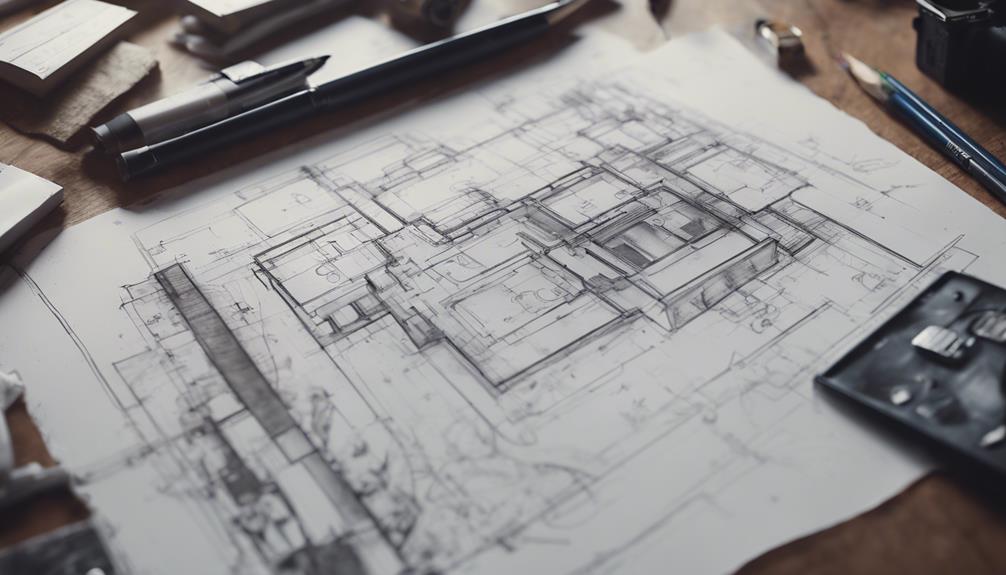
Leverage your technical drawing and construction expertise as a civil engineer to excel in interior design. As civil engineers, you already possess valuable skills that are highly applicable to the world of interior design. Your understanding of building materials and how weather impacts them can aid you in selecting durable interior design materials that will stand the test of time. Additionally, the client interaction skills you've honed in civil engineering can be seamlessly applied to assess and fulfill the needs of your interior design clients effectively.
Furthermore, the attention to detail that's intrinsic to your work in construction will enhance the precision of your interior design practice. Your expertise in renovation from civil engineering projects will also complement your understanding of interior design, leading to successful and innovative projects. By leveraging these transferable skills, you can seamlessly move into the world of interior design and make a significant impact with your unique perspective as a civil engineer.
Educational Requirements and Options

Considering your background in civil engineering, exploring educational requirements and options in interior design can be a strategic step towards shifting your career successfully. Pursuing interior design courses after graduating from civil engineering can enhance your skills and knowledge in the field.
You might want to explore studying computer engineering or taking short interior design courses to expand your expertise gradually. Completing a one-year diploma course in interior design could greatly boost your career prospects in the industry.
Balancing your civil engineering work while delving into interior design can be a creative approach to gain experience and insight into the world of design. Moving from civil engineering to interior design can be fulfilling, especially if you have a passion for design and creativity.
Keep in mind that the next time you contemplate your educational path, look for programs that align with your career goals and interests to make a smooth shift into the interior design field.
Leveraging Architectural Background

Drawing from your architectural background can greatly enhance your move into the field of interior design. As a civil engineer, your knowledge of architectural principles and design concepts can serve as a strong foundation for your shift. Leveraging this background allows you to excel in creating aesthetically pleasing interiors by applying your understanding of spatial planning and architectural detailing. Your experience in architecture aids in visualizing and executing interior design projects effectively, giving you a unique perspective that sets you apart in the industry.
| Benefits of Leveraging Architectural Background |
|---|
| 1. Solid foundation for interior design move |
| 2. Enhanced spatial planning skills |
| 3. Unique perspective on interior design projects |
Developing Design Skills and Software Proficiency

To further advance your journey into interior design as a civil engineer, focus on developing your design skills and proficiency in essential software. Start by taking courses in interior design principles and techniques to enhance your understanding of design concepts.
Practice using design software like AutoCAD, SketchUp, and Revit to familiarize yourself with tools commonly used in the industry. Learning about color theory, space planning, and furniture design will help broaden your design capabilities and creativity.
Creating interior design projects and building a strong portfolio will showcase your skills and demonstrate your ability to translate your civil engineering background into successful interior design endeavors. Remember to pay attention to material selection, textures, and finishes as these elements play a vital role in the overall aesthetic and functionality of a space.
Collaborating With Industry Professionals

When collaborating with industry professionals in interior design projects, you get to experience the synergy of different design processes coming together. Teamwork is essential for success, as architects, contractors, craftsmen, engineers, and interior designers work hand in hand to create innovative and well-rounded design solutions.
Design Process Synergy
Partnering with industry professionals in interior design projects guarantees a seamless integration of expertise for a holistic and well-executed design process. By collaborating with experts like electricians, plumbers, architects, and contractors, civil engineers can enhance both functionality and aesthetics in their projects. Synergy in the design process involves coordinating with professionals in lighting, HVAC systems, and structural modifications to guarantee a thorough approach. Integrating civil engineering expertise also safeguards compliance with building codes and regulations, providing a solid foundation for creative design solutions. This collaboration with professionals from various disciplines leads to innovative and well-rounded interior design outcomes that meet both technical requirements and aesthetic goals.
| Industry Professionals | Benefits |
|---|---|
| Electricians | Enhanced functionality through proper lighting solutions |
| Plumbers | Improved functionality with efficient plumbing design |
| Architects | Thorough design approach and spatial planning |
| Contractors | Seamless execution of design plans and construction processes |
Teamwork for Success
Working closely with industry professionals is crucial for achieving success in interior design projects. Collaboration with architects, contractors, and craftsmen is key to bringing design visions to life.
Networking with industry insiders can open doors to valuable partnerships and project opportunities. Interior designers often team up with engineers, electricians, and plumbers to guarantee projects run smoothly.
Effective teamwork with suppliers and vendors guarantees timely delivery of materials and furnishings, essential for project completion. Engaging with interior decorators and stylists can elevate the overall design aesthetic and quality of projects.
Professional Networking Benefits
To succeed in interior design, establishing professional networks with industry experts is imperative. Collaborating with architects, contractors, and suppliers enhances the overall design process, ensuring a seamless project execution.
Networking with fellow interior designers allows for valuable knowledge exchange and sparks creative inspiration for your designs. Building relationships with furniture manufacturers is key to selecting high-quality materials that elevate your projects. Partnering with artists and craftsmen opens doors to unique and customized design solutions that set your work apart.
Joining industry organizations and attending events not only fosters professional growth but also increases your visibility in the field, paving the way for exciting opportunities and collaborations. Embrace the power of networking to excel in the dynamic world of interior design!
Exploring Career Opportunities in Interior Design
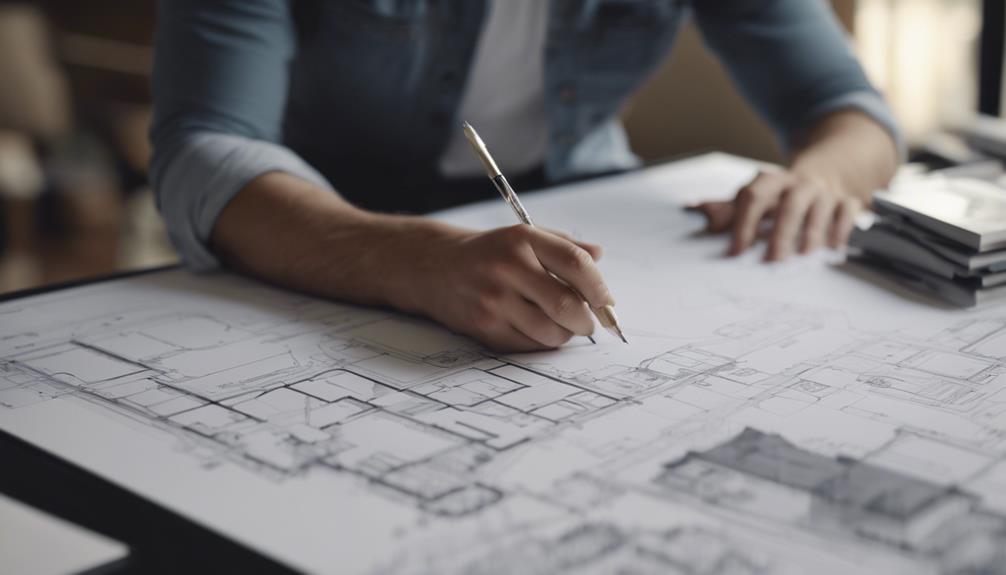
When considering a career in interior design, you'll find a diverse range of pathways to explore, from residential design to commercial projects.
To succeed in this field, strong communication skills are key, enabling you to effectively collaborate with clients and industry professionals.
Specializing in areas like furniture design can help you carve a unique niche and stand out in the competitive industry.
Career Pathways in Design
Exploring career opportunities in interior design reveals a diverse and dynamic industry awaiting your creativity and skills. Interior designers can work on various projects, from residential to commercial spaces, showcasing their unique talents.
The demand for interior designers in India is increasing, offering plentiful career prospects. Strong communication skills are essential as designers often collaborate with architects and other professionals. Specializing in niche areas like furniture design allows for a distinctive career path.
Additionally, focusing on specific aspects of interior design, such as color theory, lighting design, and 3D modeling, is crucial to excelling in this field. By honing your skills and exploring different pathways, you can carve out a successful career in the vibrant world of interior design.
Skills Needed for Success
Developing proficiency in design software like AutoCAD and SketchUp is essential for interior designers seeking success in their careers. Strong drawing and rendering skills are critical for creating detailed design concepts, while effective communication and interpersonal skills are necessary for client interactions and project collaborations.
Understanding color theory, lighting design principles, and spatial planning is key for successful interior design projects. Additionally, creative thinking and problem-solving abilities play an important role in developing innovative and functional design solutions.
Advantages of a Civil Engineer in Interior Design

Bringing technical drawing, construction, and graphics expertise, civil engineers offer unique advantages in the field of interior design. Their background in building renovation equips them with a deep understanding of structural elements, allowing for innovative and practical design solutions. Attention to detail and perfectionism honed through civil engineering work seamlessly translate into creating well-executed interior spaces. Moreover, civil engineers excel in client interaction and needs assessment, ensuring that the design process is tailored to meet individual preferences effectively.
One key advantage of a civil engineer in interior design is their expertise in material durability and weather impact. This knowledge guarantees that design choices not only look good but also stand the test of time. By leveraging their technical skills and problem-solving abilities, civil engineers can create interior spaces that aren't just aesthetically pleasing but also functional and sustainable. The blend of technical know-how and creative flair sets civil engineers apart in the world of interior design, making them a valuable addition to any design team.
Frequently Asked Questions
Is Interior Designing Related to Civil Engineering?
Yes, interior designing is related to civil engineering. Both fields focus on creating functional and visually appealing spaces within built environments. Civil engineers guarantee structural integrity, while interior designers prioritize aesthetics and user experience. Understanding building codes and regulations is vital for both professions.
Civil engineers can seamlessly integrate interior design skills into their practice, leading to thorough project outcomes. The combination of these expertise areas can result in successful and well-rounded design projects.
Can a Civil Engineer Become a Designer?
Yes, a civil engineer can absolutely become a designer! Designing isn't limited to one field; your engineering background can be a strong foundation for exploring new creative paths. By honing your design skills and pursuing relevant courses, you can shift smoothly.
Leverage your technical knowledge and embrace the artistic side of interior design. With dedication and training, you can excel as a designer and bring a unique perspective to the field.
Can an Engineer Be an Interior Designer?
You absolutely can be an engineer and immerse yourself in the exciting world of interior design! By honing your creativity and learning new design concepts, you can bring a fresh perspective to spaces.
Embrace your artistic side and blend your technical expertise with design skills. Shifting from engineering to interior design opens up a world of possibilities.
Can a Civil Engineer Design a House?
Yes, a civil engineer can design a house by focusing on structural elements, foundation systems, and building materials. They play a vital role in ensuring the house meets safety standards, local building codes, and regulations.
Considering factors like soil conditions, topography, and environmental impact, civil engineers play an essential role in efficient house design.
Collaborating with architects and interior designers enhances the overall aesthetics and functionality of the house.
Conclusion
To sum up, although it may appear as a shift from civil engineering to interior design, your background in problem-solving, technical knowledge, and creative thinking can be valuable assets in this new field.
By leveraging your transferable skills, pursuing the right education, and developing your design abilities, you can successfully shift into a career as an interior designer.
With dedication and passion, you can create beautiful spaces that blend functionality and aesthetics, showcasing your unique vision and talent.
Home Decor
What Are Home Decor Products
Browse a world of beautiful home decor products that blend functionality and style – find out how they can transform your living space!

Home decor products encompass a wide variety of items that are essential for creating the desired look and feel of living spaces. These items include furniture, art, lighting, and textiles that combine both functionality and style. They play a crucial role in establishing a comfortable and inviting atmosphere, expressing individuality, and catering to personal preferences. Popular decor trends such as minimalist, modern, and bohemian styles heavily influence the choices made by consumers. DIY projects allow for a personal touch to be added to the decor, while seasonal tips help to refresh spaces with the spirit of different times of the year. From online marketplaces to specialty boutiques, there are various places where unique pieces can be found. Explore more about the different types of decor, current trends, and DIY ideas that can help enhance your living environment.
Key Takeaways
- Furniture for functionality and aesthetics.
- Art and accessories for personality.
- Textiles for texture and coziness.
- Enhance space functionality and style.
- Tailor decor to unique preferences and styles.
Definition of Home Decor
When we think about home decor, it encompasses a wide range of items and decorations that enhance the appearance of our living spaces. Interior design plays an important role in curating the overall aesthetic of a home, incorporating decor pieces that reflect personal style and preferences. These decor elements can range from furniture and art to plants, accessories, pillows, bedding, lamps, and more. Each design element contributes to the ambiance and atmosphere of a room, creating a cohesive and visually pleasing environment.
Professional interior designers can offer valuable expertise in selecting decor pieces that align with the desired style and functionality of a space. While not always necessary, their input can elevate the overall look and feel of a home. The differentiation in home decor refers to the unique combination of items and design elements that define a particular space. These elements are easily updated or changed to refresh the look of a room, allowing for flexibility and creativity in home decor choices.
Importance of Home Decor
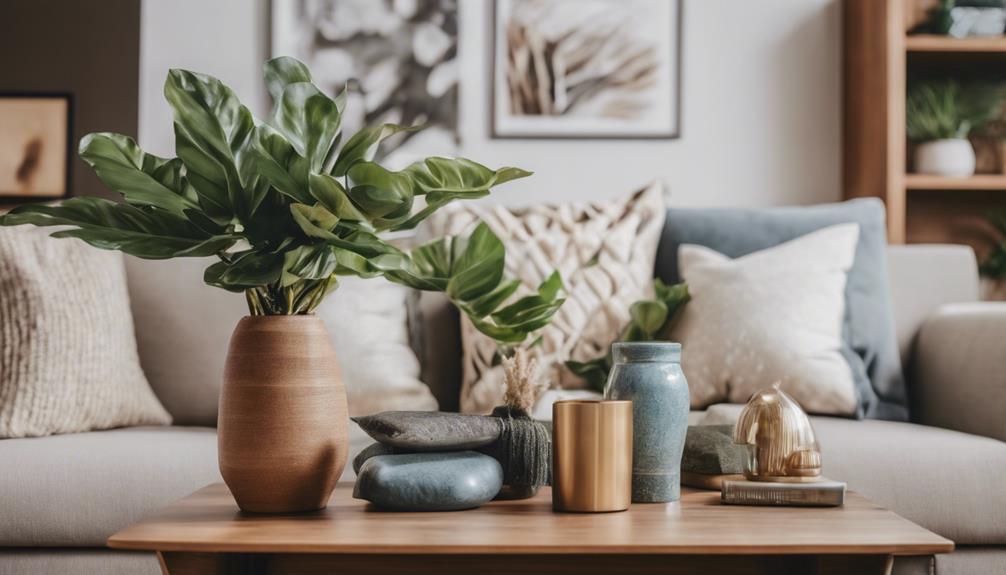
Home decor plays a pivotal role in transforming our living spaces, fostering a sense of comfort and aesthetic appeal. It allows us to express our individuality and personality through the design choices we make.
With the ability to refresh a room's look easily, these products play a significant part in shaping the ambiance of our homes.
Enhancing Living Spaces
To enhance living spaces, incorporating home decor products is essential. Here are three key ways in which home decor products can elevate the interior design of a room:
- Furniture: Choosing the right furniture pieces can completely transform the look and feel of a room, providing both functionality and style.
- Art and Accessories: Adding art pieces and accessories can inject personality and character into a space, making it feel more inviting and unique.
- Lighting: Proper lighting can set the mood and ambiance of a room, enhancing the overall design and creating a cozy atmosphere.
Reflecting Personal Style
Reflecting personal style through home decor choices adds a distinct touch of individuality to any living space. By incorporating personalized items that align with our tastes and preferences, we create a unique atmosphere that truly reflects who we are. Home decor products cater to a wide range of design aesthetics, allowing us to express our creativity and make our living spaces feel like home. The variety of options available enables us to curate a space that resonates with our individual style, making it a true extension of ourselves. Whether it's through color schemes, furniture choices, or decorative accents, our personal touch transforms a house into a home that speaks to our personalities.
| Personal Style | Individual Aesthetics | Creativity |
|---|---|---|
| Unique | Customized | Expressive |
| Distinct | Varied | Original |
| Reflective | Cohesive | Artistic |
| Personalized | Diverse | Innovative |
Types of Home Decor Products

Enhancing living spaces with a variety of decor products is essential for creating a personalized and visually appealing atmosphere. When initiating a design project, interior designers play an important role in selecting and arranging home decor items to achieve a cohesive look. These products not only add aesthetic value but also contribute to the functionality of a space.
Here are three types of home decor products commonly used to elevate interiors:
- Furniture: Pieces such as sofas, tables, chairs, and cabinets serve as both functional and decorative elements in a room.
- Art and Accessories: Paintings, sculptures, vases, and other decorative items add personality and flair to the space.
- Textiles: Items like pillows, bedding, curtains, and rugs introduce texture, color, and coziness to the room.
With a vast array of home decor products available, individuals can easily tailor their living spaces to suit their unique styles and preferences.
Popular Home Decor Trends

When it comes to popular home decor trends, we can't help but notice the current decor styles that are making a splash.
Timeless design elements are also gaining traction, adding a touch of sophistication to any space.
Emerging color schemes are catching the eye of many, offering fresh and modern ways to liven up any room.
Current Decor Styles
Among the diverse array of popular home decor trends today, minimalist, modern, bohemian, Scandinavian, and industrial styles stand out as prominent choices for interior design enthusiasts. These styles emphasize clean lines, simplicity, and functionality while incorporating unique elements to create visually appealing spaces.
To stay on-trend, consider the following:
- Minimalist: Focus on decluttering and using neutral colors to achieve a clean and calming environment.
- Modern: Incorporate sleek furniture, metallic accents, and statement lighting for a contemporary feel.
- Sustainability: Opt for eco-friendly materials, such as reclaimed wood or recycled fabrics, to promote a more environmentally conscious design approach.
Timeless Design Elements
Timeless design elements play a significant role in shaping the aesthetic appeal and functionality of home decor, complementing the various current decor styles in interior design trends. Classic pieces like teapots, vases, and metal wall-hung sculptures add timeless elegance to a home. These elements come in various designs, sizes, and materials, serving as focal points in room design and often becoming cherished heirlooms passed down through generations.
Functional items such as rugs, mirrors, and designer storage systems not only enhance the aesthetics but also improve the practicality of living spaces. Personalized touches like bold colorful paintings and unique personal collections reflect individual tastes, adding a touch of personality and uniqueness to home decor.
Emerging Color Schemes
Emerging color schemes are revolutionizing the landscape of popular home decor trends with a vibrant array of earthy tones and bold, statement-making hues.
- Earthy Tones: Home decorators are embracing earthy tones like terracotta, sage green, and warm neutrals such as beige and taupe to bring a sense of nature indoors.
- Tonal Decorating: The trend of tonal decorating involves mixing different shades of the same color to create a harmonious and sophisticated look in living spaces.
- Accent Pieces: Adding pops of color through accent pieces like throw pillows, artwork, and decorative accessories is a simple yet effective way to infuse personality and visual interest into a room's color scheme.
Budget-Friendly Decor Ideas

When decorating on a budget, we can transform our living spaces creatively with simple yet impactful decor choices. Affordable options abound in the world of top home decor, offering budget-friendly ideas to spruce up any room.
Utilizing items like decorative cushions, rugs, and wall prints can enhance a space without breaking the bank. DIY projects present another avenue for cost-effective solutions, allowing for custom wall art or the repurposing of existing decor items.
Thrift store finds, garage sale treasures, and online marketplaces provide unique pieces at wallet-friendly prices, adding character to a room. Upcycling old furniture, incorporating indoor plants in stylish vessels, and utilizing decorative accessories like vases can elevate the look of a space without a hefty price tag.
Shopping seasonal sales, exploring discount stores, and seizing coupons or promotional offers are savvy ways to acquire home decor products at affordable prices.
DIY Home Decor Projects

Engage your creative side and personalize your living space with DIY home decor projects. These projects offer a fantastic way to add a personal touch to your home while showcasing your crafting skills.
Here are three popular DIY projects to get you started:
- Handmade Wall Art: Create unique pieces of art using various materials like canvas, wood, or even recycled items. Let your imagination run wild with colors, shapes, and textures to design a beautiful focal point for any room.
- Upcycled Decorative Items: Give new life to old items by upcycling them into decorative pieces for your home. Transform thrift store finds or unused items into stylish decor accents through painting, repurposing, or embellishing.
- Customized Centerpieces: Design one-of-a-kind centerpieces for your dining table or living room by combining different elements like candles, flowers, or seasonal items. Personalize these centerpieces to match your home decor style and create a striking visual impact.
DIY home decor projects not only allow you to express your creativity but also help you save money while making your living space truly unique.
Seasonal Home Decor Tips
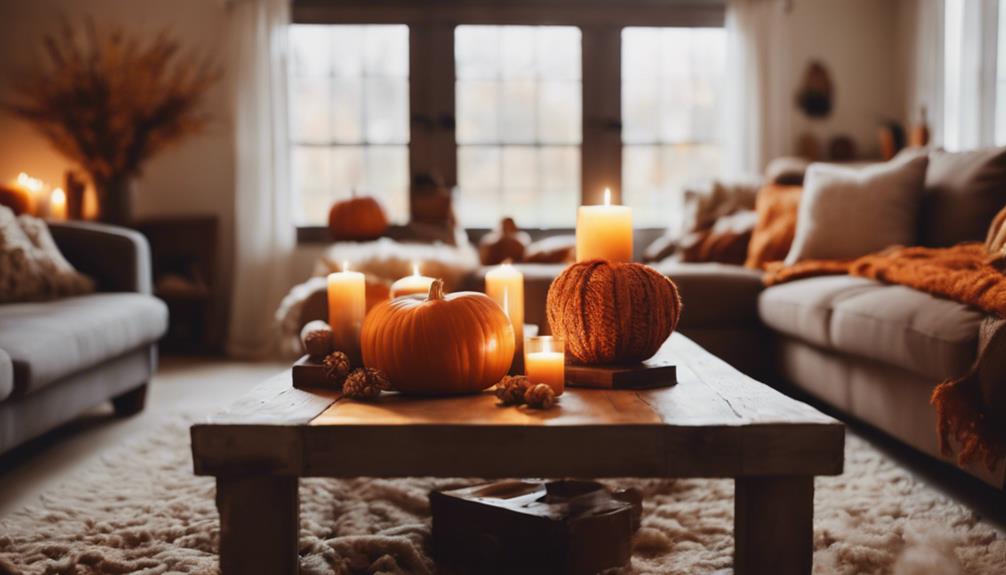
Enhance your home decor by incorporating seasonal elements to create a festive atmosphere that changes with the seasons and holidays. Seasonal home decor allows you to infuse your living spaces with the spirit of different times of the year.
Incorporating seasonal colors, patterns, and motifs can instantly transform the look and feel of your home. For example, during fall, consider adding warm tones like deep oranges, rich browns, and earthy greens to evoke a cozy autumn feel. In winter, opt for cool blues, silvers, and whites to create a serene and wintery ambiance.
Swapping out textiles such as throw pillows and blankets in seasonal hues can easily update the decor in any room. You can also use seasonal elements like pumpkins for fall or snowflakes for winter to add a touch of whimsy.
Where to Buy Home Decor
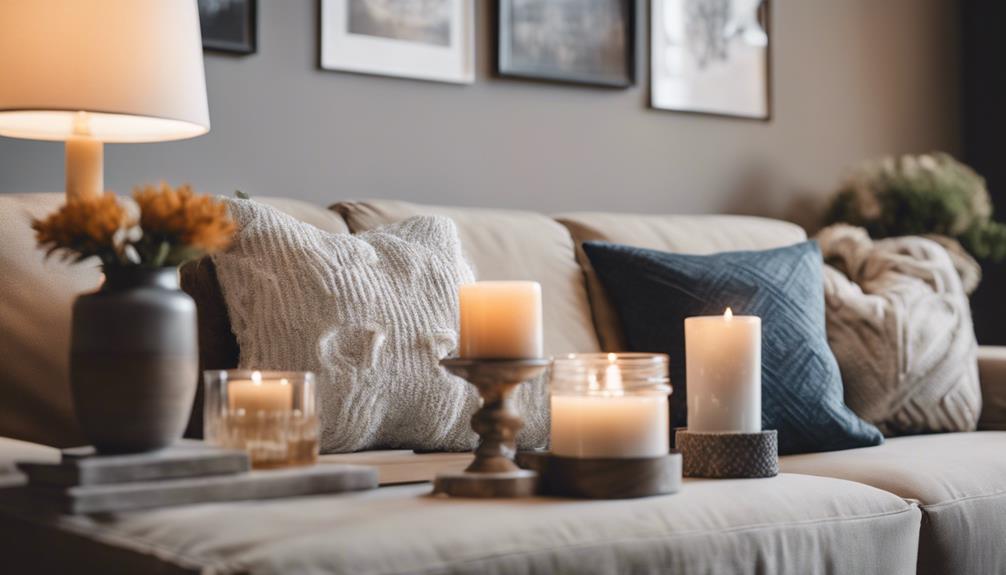
For those seeking home decor products, various options exist both online and in physical stores. When looking to buy home decor, consider the following:
- Online Marketplaces: Websites like Amazon, Wayfair, and Etsy offer a vast array of home decor items at your fingertips. You can browse through a wide selection of products, compare prices, and read reviews from other customers before making a purchase.
- Home Decor Stores: Retailers such as Pottery Barn, West Elm, and IKEA have brick-and-mortar locations where you can explore different styles and see the products in person. These stores often have knowledgeable staff to assist you with your home decor needs.
- Specialty Boutiques: If you're looking for unique and handcrafted pieces, specialty boutiques and local artisans are great places to find one-of-a-kind home decor items that can add a personal touch to your space. Shopping at these boutique stores can help you discover exclusive pieces that may not be available elsewhere.
Frequently Asked Questions
What Does Home Decor Include?
Home decor includes furniture, art, plants, accessories, pillows, bedding, lamps, and more. These items enhance the appearance of a space and can be easily updated.
Differentiation in home decor refers to items that wouldn't stay put if the room were turned upside-down. While professional help isn't always needed, interior designers can assist in creating cohesive designs.
What Are the Most Popular Home Decor Items?
We've found that candles, textiles, and custom products rank high as sought-after home decor items. Personalized options like throw pillows and mugs are particularly in demand.
Homeowners also love customizable pieces such as flags, glass items, and coasters. Functional accessories like designer storage systems and mirrors are popular choices.
And let's not forget artistic elements like sculptures and paintings, which add a touch of aesthetic value to any living space.
What Are Examples of Decor?
Examples of decor include:
- Vases
- Teapots
- Metal wall-hung sculptures
- Porcelain or ceramic sculptures
These items come in various designs, sizes, and materials to add aesthetic value to a home. They can serve as focal points in a room's design, enhancing its overall appeal. Some decor items have cultural significance and can be passed down through generations. Personalized elements like bold colorful paintings can add uniqueness and personality to a space.
What Is Decoration Product?
When it comes to decoration products, we're talking about items that enhance the look of a space. These products can include anything from furniture and art to plants, pillows, lamps, and more. They're easily changeable and can make a big impact on a room.
Interior designers often use decoration products to elevate a room's design. The goal is to add personality, style, and visual appeal to a living space.
Conclusion
To sum up, home decor products are essential for creating a welcoming and personalized living space. Did you know that 85% of people believe that a well-decorated home can positively impact their mood and overall well-being?
Whether you're looking for budget-friendly options or want to try your hand at DIY projects, there are endless possibilities to make your home uniquely yours. So, go ahead and start transforming your space today!
Interior
Does Interior Paint Increase Home Value
Yearning to discover how interior paint can skyrocket your home's value? Get ready to unlock the secrets that will transform your space!
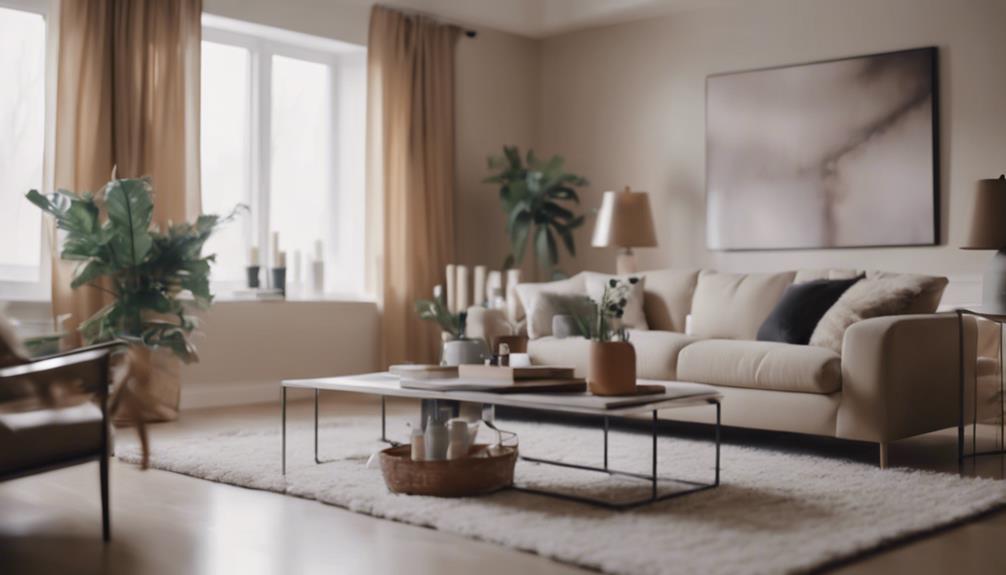
Interior paint plays a crucial role in increasing the value of your home by impressing potential buyers with a cohesive, fresh appearance. The color palettes you select have a long-lasting impact on how your home is perceived, influencing its attractiveness and market value. Choosing high-quality paint and strategic color combinations, such as neutrals, can significantly enhance the value of your property. Additionally, remember to update your interior paint every 7-8 years to maintain that fresh, welcoming atmosphere. Investing in top-notch paint and thoughtful color choices can greatly improve your home’s value and overall visual appeal. Are you ready to enhance the value of your home?
Key Takeaways
- Neutral colors and consistent schemes boost perceived value.
- Quality professional paint jobs command higher prices.
- Regular repainting every 7-8 years enhances home appeal.
- Strategic color choices significantly impact home value.
- Fresh, neutral paint increases space perception and curb appeal.
Importance of Interior Paint in Home Value
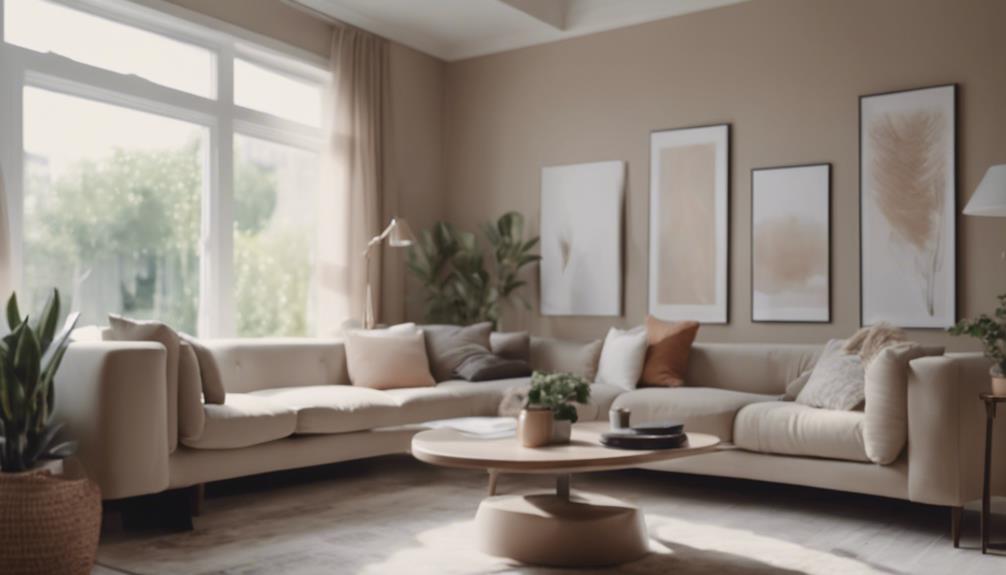
When contemplating the importance of interior paint in determining home value, it's crucial to understand its direct impact on potential buyers' perceptions and the overall financial return on investment.
The colors you choose to paint your walls can greatly influence how buyers view your home. A fresh coat of paint can enhance the perceived value of your home, showing that you have taken good care of the property. Consistent color schemes throughout the house can create a sense of flow and unity, making the space more appealing to potential buyers.
Additionally, repainting every 7-8 years with neutral colors can help maintain a fresh and updated look, maximizing the value of your home. Neutral colors have broad appeal and can make spaces appear larger, which is attractive to buyers. By investing in quality interior paint and choosing the right colors, you can significantly enhance the value of your home and make it more appealing to potential buyers.
Factors Influencing Home Value Through Paint
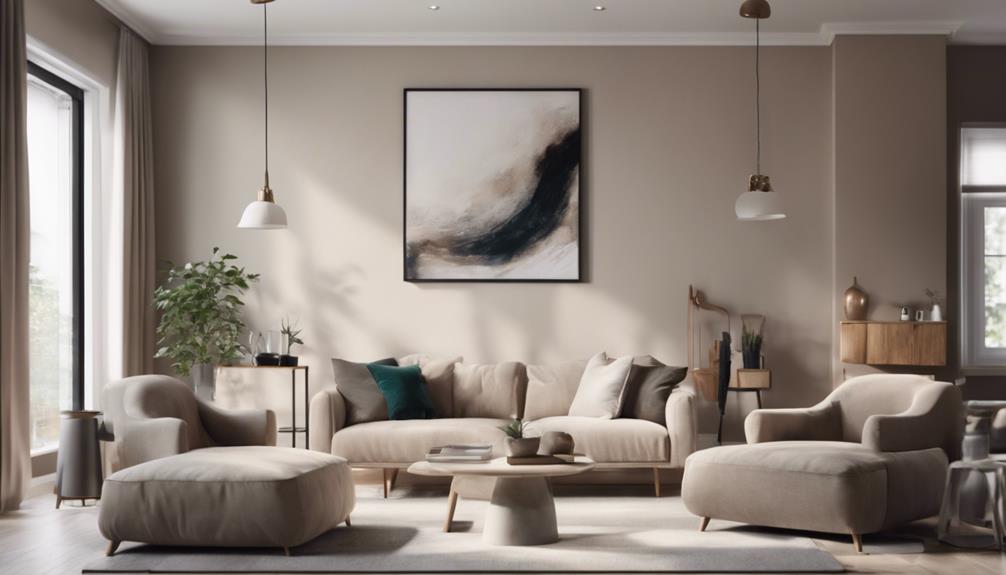
Factors that influence home value through paint include the choice of colors, the quality of the paint job, and the consistency of color schemes throughout the property. Neutral paint colors are highly recommended as they appeal to a broader range of buyers and can positively impact the perceived home value. Opting for professional interior paint jobs not only showcases good maintenance and care but also allows you to command higher prices in the real estate market. Consistent color schemes across your home can greatly improve flow and unity, enhancing the overall appeal and value of the property. Investing in quality interior paint can lead to a remarkable 107% return on investment, making it a wise choice for increasing your home's value. Take a look at the table below for a quick overview of how these factors can impact your home value:
| Factors to Take into Account | Impact on Home Value |
|---|---|
| Neutral Paint Colors | Positive |
| Professional Paint Jobs | Higher Prices |
| Consistent Color Schemes | Enhanced Appeal |
| Quality Interior Paint | Significant ROI |
Choosing the Right Colors for Value
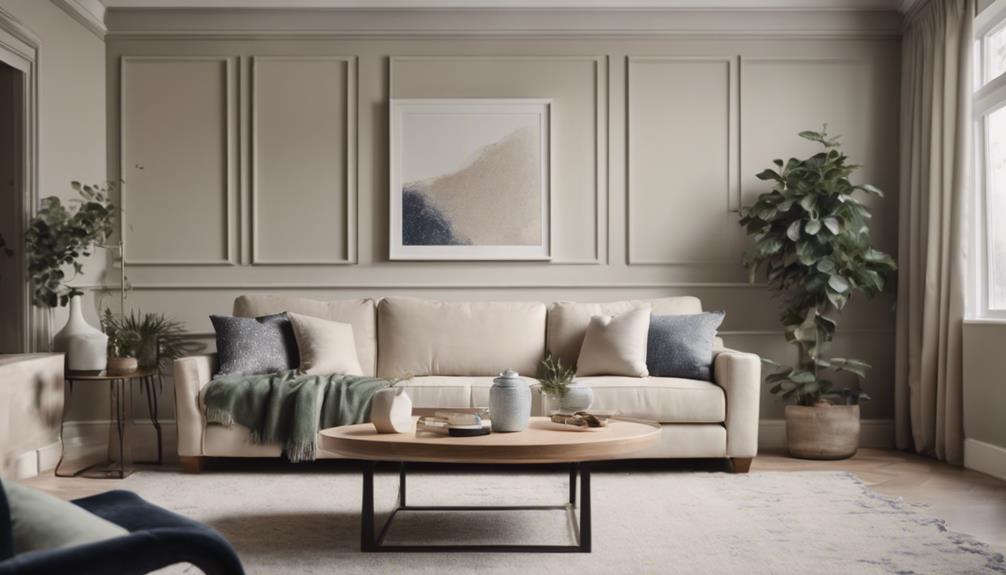
For maximizing your home's value through paint selection, prioritize choosing neutral shades like beige, tan, and greige. When selecting colors for value, keep in mind the impact they can have on your home's overall worth. Specific colors can make a significant difference in boosting your home's curb appeal and perceived value.
Consider the following tips for choosing the right paint colors:
- Darker Colors for Doors: Darker hues like gray, black, or navy blue on doors can add a touch of sophistication and elevate the asking price of your home.
- Light Blue-Gray Kitchens: Opting for light blue-gray tones in kitchens can make your home more appealing to potential buyers and potentially fetch higher selling prices.
- Bold Accent Colors: Using bold accent colors on doors or shutters can create visual interest and enhance the overall value of your property.
- Warm Neutrals: Warm neutrals such as tans and light taupe can help create a welcoming atmosphere and positively impact the perceived value of your home.
Enhancing Home Value With Fresh Paint
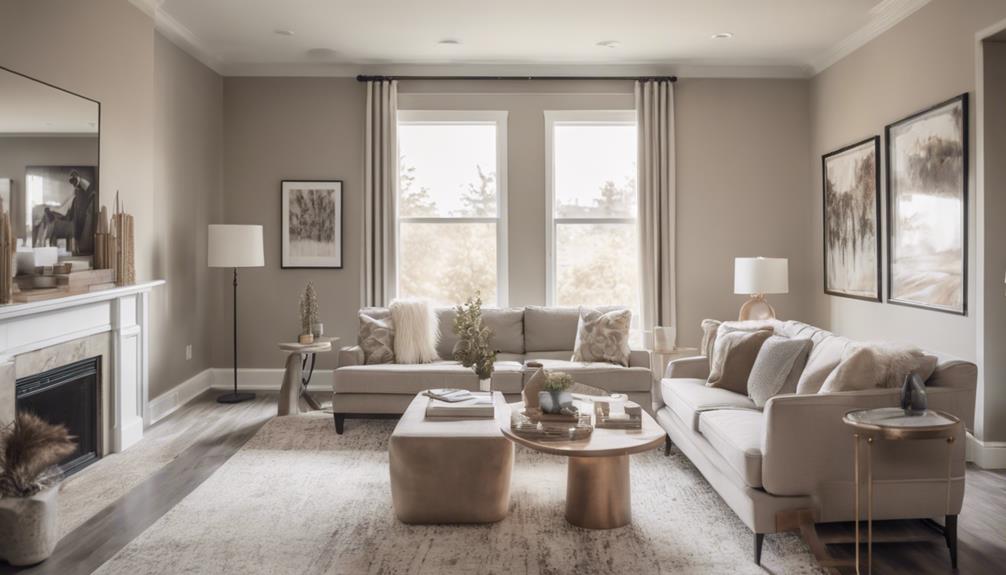
Enhancing your home's value with a fresh coat of paint can be a highly effective and lucrative investment. A fresh interior paint job not only refreshes the look of your home but also has the potential to increase its value substantially.
When potential buyers walk into a home with crisp, freshly painted walls, they immediately see a space that's well-cared for and move-in ready. This first impression can make a big difference in how they perceive the value of the property.
Whether you're painting a single room or giving the exterior a fresh new look, investing in painting as part of your home improvements can pay off in the long run. Fresh, neutral colors can make rooms appear more spacious and inviting, while a well-executed exterior paint job can boost curb appeal and attract more interest from potential buyers.
Maximizing ROI With Interior Paint
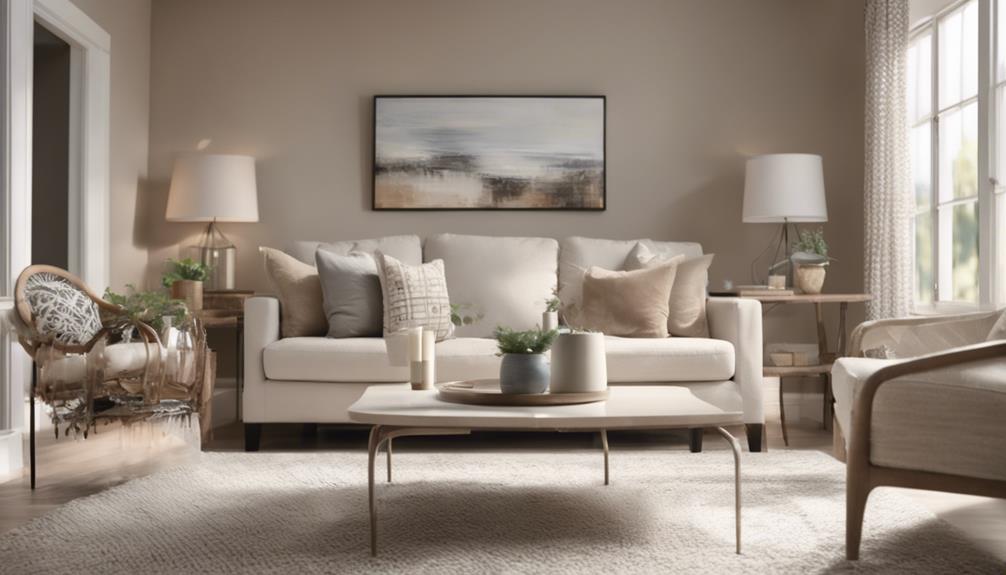
To maximize your return on investment with interior paint, consider the impact of color choices on perceived home value and overall appeal. When aiming to increase your home's ROI through painting, keep these key points in mind:
- Choose Neutral Colors: Opting for neutral tones can elevate the perceived value of your home, appealing to a wider range of potential buyers.
- Regular Maintenance: Repainting every 7-8 years is essential for maintaining your home's value and keeping it looking fresh and well-cared for.
- Consistent Color Schemes: Creating a consistent color palette throughout your house enhances flow and unity, making the space feel cohesive and inviting.
- Maximize Value: By strategically repainting key areas with attention to detail and quality, you can greatly enhance the overall value of your home.
Frequently Asked Questions
What Paint Color Increases Home Value?
Choosing the right paint color can greatly impact your home value. Neutral shades like light gray, beige, and greige are safe bets for increasing attractiveness. Dark colors such as charcoal gray, navy blue, or black on doors can elevate property prices.
Timeless exterior colors boost curb appeal, attracting buyers. Soft blues, greens, and yellows create inviting exteriors. Bold accent colors on doors or shutters add flair and value to your home.
Does Fresh Interior Paint Help Sell a House?
Fresh interior paint can work wonders when selling a house. Did you know that homes with freshly painted interiors tend to sell faster?
That's right! A fresh coat of paint can make your space look newer and more appealing to potential buyers. It's like giving your home a facelift that attracts more attention.
What Is the Best Interior Paint Color for Selling Your Home?
When choosing the best interior paint color to sell your home, go for neutral tones like grays, beiges, or greiges. These colors have broad appeal and can attract a wider range of potential buyers.
Soft blues and greens create a welcoming atmosphere, while bold accent colors on doors or shutters can increase your home's value.
How Much Value Does Paint Add?
Adding a fresh coat of interior paint to your home can greatly impact its value. On average, interior painting can increase your home's worth by $2,112! This high return on investment of 107% makes it a smart choice.
Selecting quality paint and cohesive color schemes can enhance the overall appeal of your home. With the right colors, you can even make your spaces feel larger or cozier, positively influencing your home's value.
Conclusion
So, next time you're thinking about sprucing up your home, remember that a fresh coat of interior paint can truly make a difference in its value.
Some may argue that paint is just a cosmetic change, but in reality, it can greatly enhance the overall appeal and marketability of your home.
Don't underestimate the power of paint when it comes to maximizing your return on investment!
-

 Vetted8 months ago
Vetted8 months ago15 Best EMS Foot Massagers for Neuropathy to Soothe Your Feet
-

 Vetted7 months ago
Vetted7 months ago14 Best Personalized Father's Day Gifts for Your Husband – Show Him You Care
-

 Alfresco7 months ago
Alfresco7 months agoAlfresco Stacker Doors: Seamless Indoor-Outdoor Living!
-

 Tableware and Dining Accessories2 weeks ago
Tableware and Dining Accessories2 weeks agoWhat Is the Meaning of the Word Tableware
-
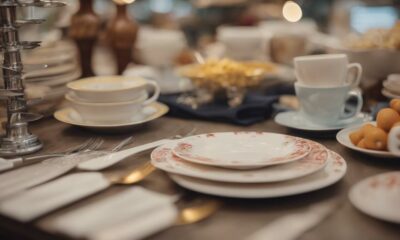
 Tableware and Dining Accessories2 weeks ago
Tableware and Dining Accessories2 weeks agoWhen Is Tableware on Sale at Hobby Lobby
-
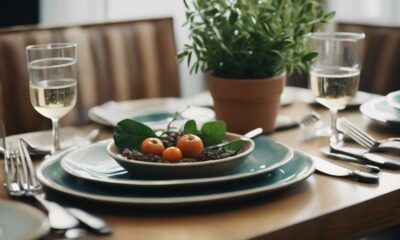
 Tableware and Dining Accessories2 weeks ago
Tableware and Dining Accessories2 weeks agoWhich of the Following Is Not Classified as Tableware
-

 Vetted8 months ago
Vetted8 months ago15 Best Detergents for Wool: Keep Your Woolens Looking Fresh and Fabulous
-

 Craft and Textiles2 hours ago
Craft and Textiles2 hours ago15 Best Places to Buy Appliances for Your Home – Top Retailers Reviewed






























